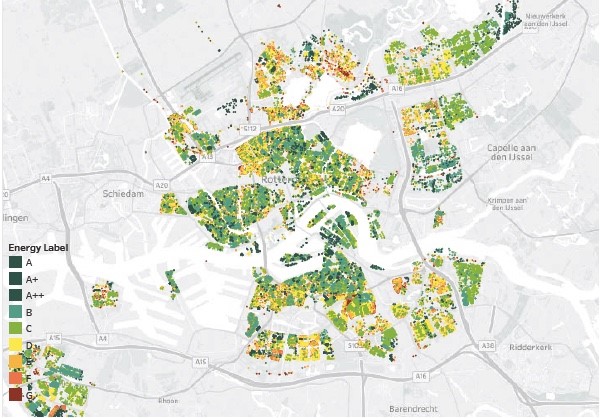DREEAM – Demonstrating an integrated Renovation approach for Energy Efficiency At the Multi-building scale
Building Characteristics
Building type
Type of ownership
Climate
Age Class
Cost Benefit Indicators
Embedded Technologies
Envelope
HVAC
Renewables
Energy management
Technology readiness
system complete and qualified
Description
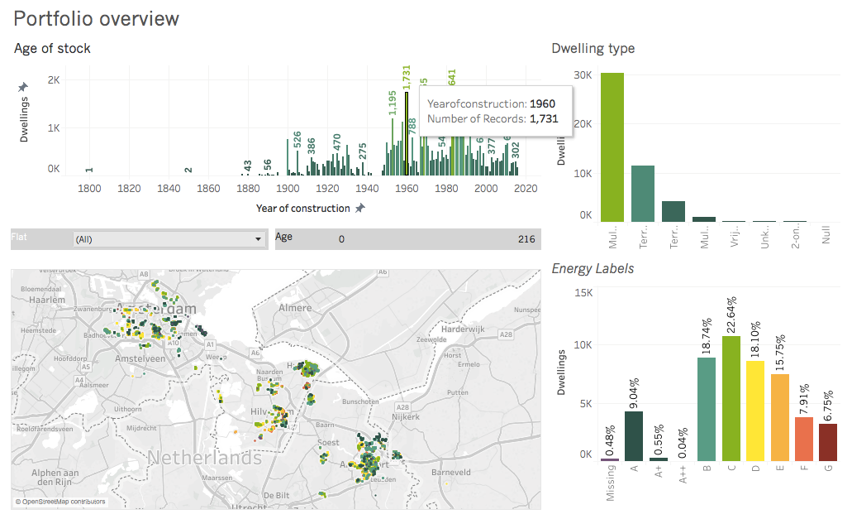
The H2020 project DREEAM focuses on the deep renovation of social houses managed by a single owner with a large portfolio of residential buildings. The investment scenario model has been developed by Bax & Company in the framework of the DREEAM project to demonstrate the value of scaled investment planning for achieving building owners’ long-term sustainability vision. Applying a “backcasting” approach, energy efficiency targets are considered the starting point for the development of investment strategies which realistically link the building owners’ financial capacity with the renovation measures to be implemented.
The current status of the building portfolio is assessed based on the crosscutting dataset built from operational, technical and financial data points at dwelling level. Building typologies (archetypes) and age are key tools for categorising the stock as well as a basis for the design of tailored renovation packages.
The integration and visualisation of datasets in an interactive manner allows decision-makers to quickly design and assess alternative investment strategies. Having applied the tool with 10 housing providers across Europe, the tool has helped to bring decision-making energy efficiency investment to board level. The tool offers:
- Increased importance and agreed investment in data collection and management
- Adjusted (often upwards) of renovation investments, due to better insight in (financial) feasibility
- Unlocking of better financial conditions (‘green’ interest discounts) and national and EU grants
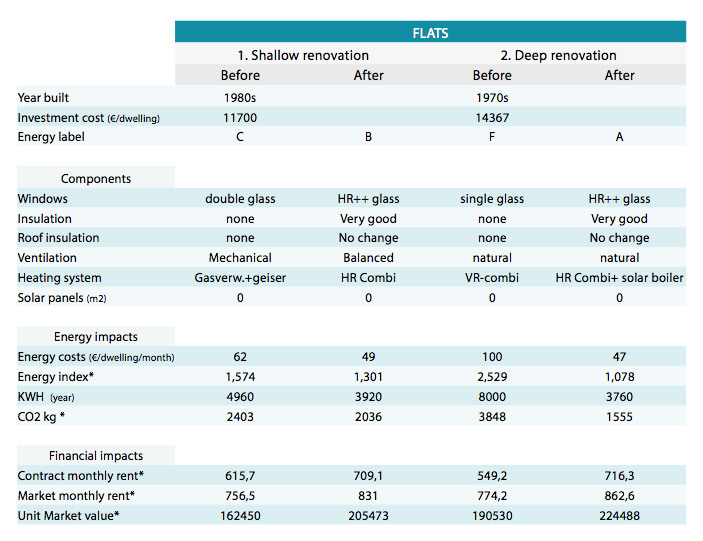
Example of simplified renovation package
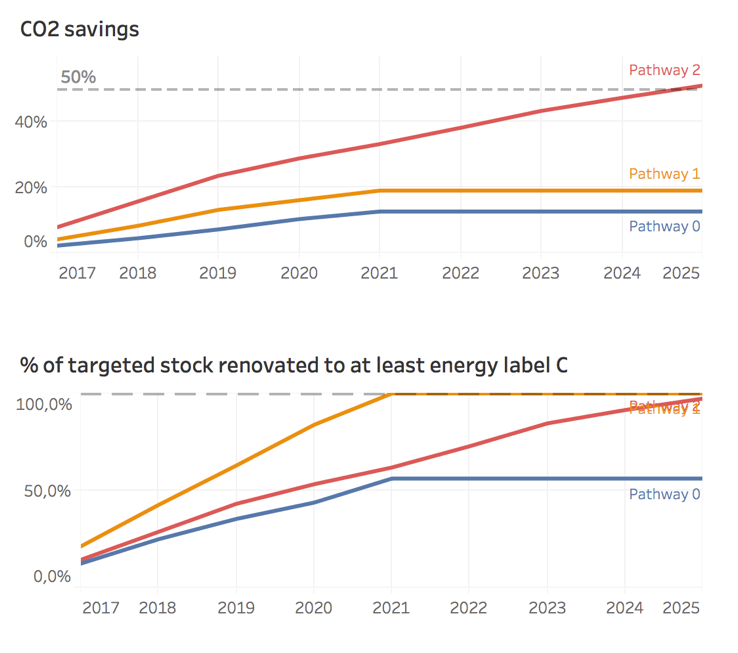
Example of simplified renovation package
Design and implementation
Strenghts
- The analysis support decision making on portfolio investment planning at board level
- Interactive visualization of current portfolio status
- It demonstrates financial viability of strategies in compliance with policy targets and quantifies tenant benefits
Weaknesses
- Data quality is very important for developing an insightful and valuable analysis
Opportunities
- Investment planning open access to low-cost financing instruments and better financing terms
- Visualisation of portfolio current quality enables identification of clusters of buildings with similar characteristics unlocking benefit of ecnomy of scale in multi building renovation
Threats
- Low collaboration and inputs from the housing associations
- Low data availability
Example
For the first time, the DREEAM replication programme has linked Rotterdam’s homeownership databases with dwelling type, energy labels, and geolocation.
The analysis has helped the city enhance its sustainability programme, Rotterdam Duurzaam, by pinpointing districts ideal for renovation, and even individual landlords and homeowners who would benefit the most from an energy-focused renovation. The European Investment Bank now supports this targeted approach with a €3M ELENA grant.
Analysis of the market structure
The Rotterdam city map shows energy quality of dwellings. Typically, lower quality dwellings are located in the northern parts of the city (such as Schiebroek, Noord, het Lage land), and sections in the south (Pendrecht, Lombardije and others).
Ownership type and quality
Analysing ownership type and building quality shows building quality varies significantly between groups. Most low-quality buildings are owned by social housing providers. Commercial landlords, both small and large, typically manage the lowest quality stock. Owner-occupier homes on average have the highest building quality (mostly due to recent year of construction).
Opportunities for multi-building renovation
The analysis shows that main opportunities for district (multi-building) renovation are in the south of the city, with either social housing providers or groups of small commercial landlords.
Example of sectorial analysis
The analysis has identified the largest private landlords and has singled out those with a particularly poor building quality, allowing design of targeted support schemes.
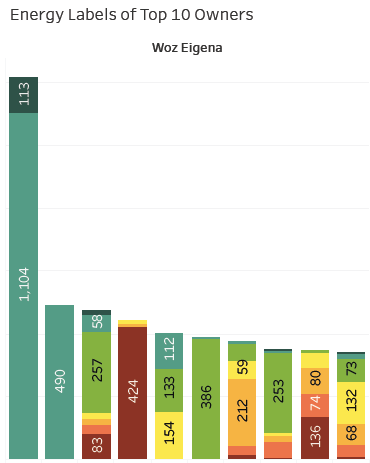 Action taken by Rotterdam
Action taken by Rotterdam
The analysis has been used by the Sustainable Rotterdam (Duurzaam Rotterdam programme), contributing to the following actions;
- Institutional investors have been identified as target group. Organisations will be approached individually with proposals and subsidies for roof-mounted PV, or technical assistance for deep renovation;
- With social housing providers , district-based renovation programmes are being planned and coordinated.
